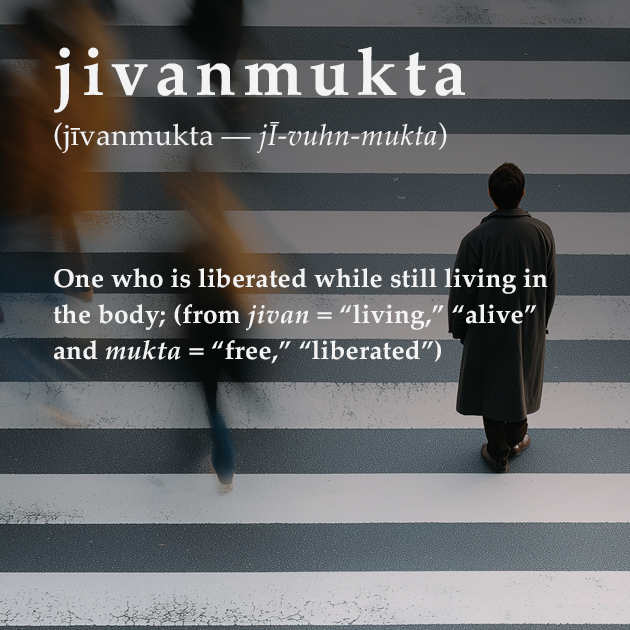Jivanmukta - Liberated While Living
- Daniel McKenzie

- Sep 9
- 3 min read
Updated: Dec 12

Vedanta defines freedom not as escape from the world but as freedom within the world. The term jivanmukta (jīvanmukta) means “liberated while living.” Such a person has attained Self-knowledge and no longer identifies with the body–mind complex, even though it continues to function due to prarabdha karma. The body remains, born of Ishvara's creation, but the sense of bondage is gone.
Vedanta often uses the dream metaphor: just as the dreamer takes the dream as real until waking, the bound jiva takes the world as absolutely real until awakening to the Self. The jivanmukta lives in the world knowing it is mithya, giving it due respect without overestimating or underestimating it.
Classical texts emphasize that for the jivanmukta, two kinds of karma — sanchita (accumulated) and agami (future) — are destroyed by Self-knowledge. Only prarabdha (karma already in motion, which produced the current body) continues until exhaustion. Hence, the liberated one still eats, feels heat and cold, experiences joy and sorrow — but without attachment, like watching a magic show while knowing the trick.
Descriptions of the jivanmukta abound: content, fearless, compassionate, free of hatred and desire, friendly to all, balanced in gain and loss, and emotionally unshaken. These qualities are not cultivated artificially but arise naturally from assimilation of Self-knowledge. The jivanmukta accepts the play of gunas, interacts with the world, yet never confuses the jiva with the Self.
Ultimately, the jivanmukta lives in effortless harmony: fully engaged, yet untouched. Liberation does not make the person superhuman — it dissolves the need to be anything other than what one already is: limitless awareness, ever free.
Root & Meaning
Jivan = living, alive
Mukta = free, liberated
Jivanmukta = one who is liberated while still living in the body.
Scriptural References
Bhagavad Gita (5.8–9, 6.27): describes the wise as seeing no doership, established in the Self, at peace.
Mandukya Karika (3.31–36): portrays the liberated sage as unattached, serene, seeing the world like a dream.
Swami Dayananda, Swami Paramarthananda: clarify the state of the jivanmukta as one whose bondage is removed but whose body continues until prarabdha karma is exhausted.
Traditional View
The jivanmukta has destroyed ignorance; the Self is fully realized.
Sanchita and agami karmas are nullified by knowledge; only prarabdha sustains the body.
Lives without a sense of doership or enjoyership.
Exhibits natural virtues such as humility, compassion, and equanimity.
Vedantic Analysis
The jivanmukta knows the jiva is mithya and the Self is satya.
Duality appears, but is no longer binding, like a mirage seen as a mirage.
Emotional disturbances may arise but are absorbed without fracture, as waves in the ocean.
Freedom is in recognizing that the Self was never bound; liberation is the removal of ignorance, not a transformation of the person.
Common Misunderstandings
That liberation ends all experiences: The jivanmukta still experiences pleasure and pain but remains free from bondage.
That enlightenment perfects the person: The person remains subject to gunas and prarabdha; perfection is not required.
That the jivanmukta becomes Ishvara: The liberated jiva does not merge into God while alive but knows non-difference in essence.
Vedantic Resolution
The jivanmukta embodies the paradox of Vedanta: while living within limitations, one abides in the limitless. The body–mind continues due to prarabdha, but the sense of individuality is known to be mithya. Liberation is freedom from identification, not from life itself.
